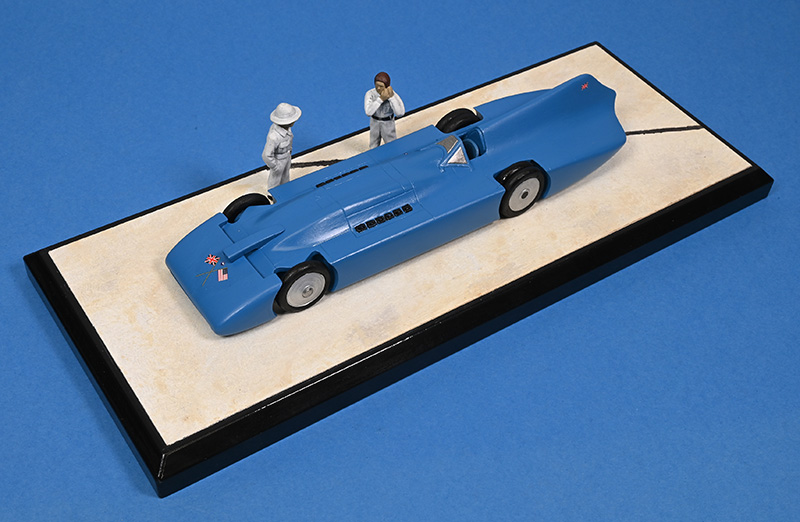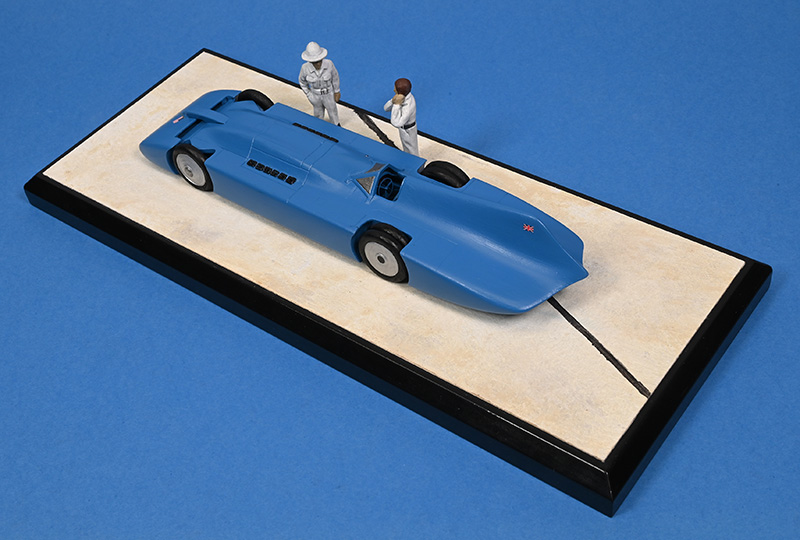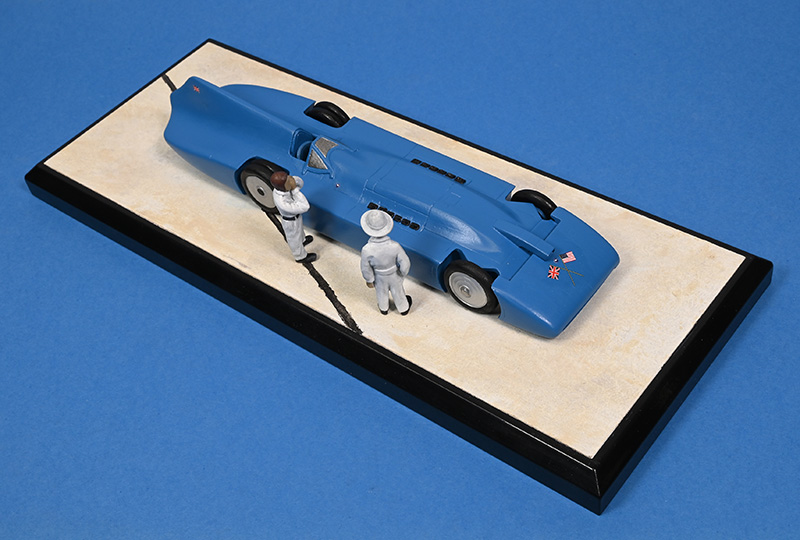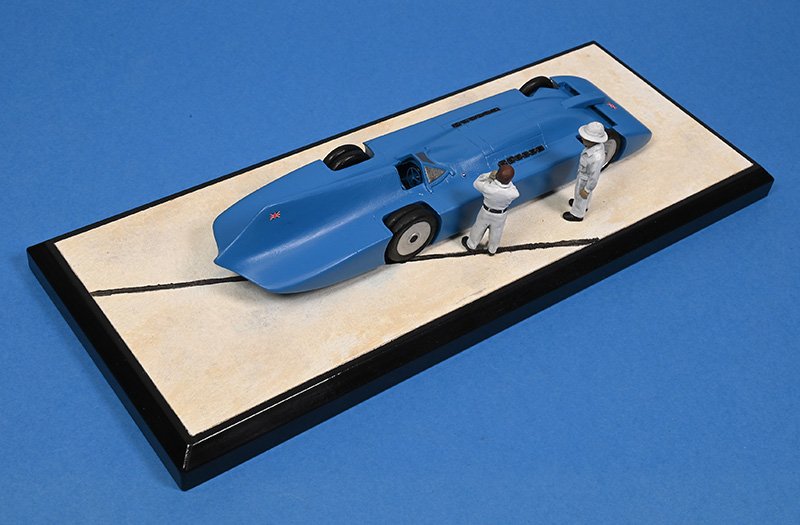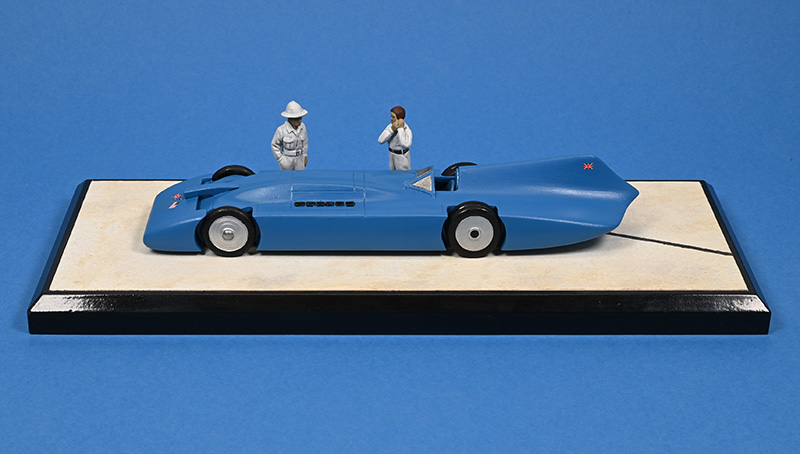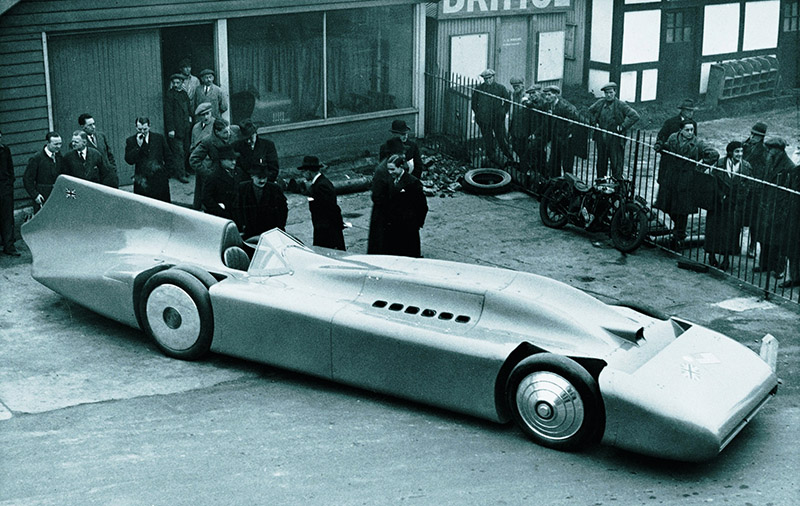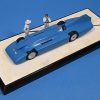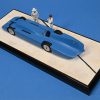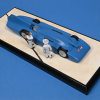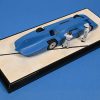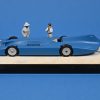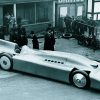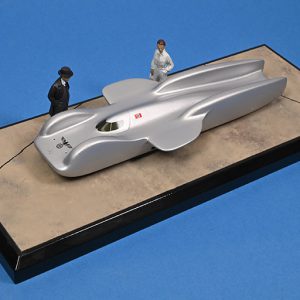Campbell-Railton Blue Bird
Sir Malcolm Campbell
301.129 MPH, Bonneville September 3rd 1935
The Campbell-Railton Blue Bird was the final land speed record car commissioned by Sir Malcolm Campbell. On September 3rd, 1935 he set a new land speed record of 301.129 miles per hour (mph) on the Bonneville Salt Flats in Utah, USA becoming the first person to drive an automobile over 300 mph (483 km/h). This was not the first record breaking run by Campbell who gained the world speed record on land at various times during the 1920s and 1930s using aircraft engine powered vehicles, all called Blue Bird.
Campbell began his long association with the Land Speed Record when he borrowed a Sunbeam 350hp in 1923 to compete in the Salt-burn Speed Trials, when he achieved a speed of 138mph. Campbell later purchased and modified the 350hp car, painted it in his favourite shade of azure blue, and named it ‘Blue Bird’ after one of his Brooklands racing cars.
In 1927 Campbell used a Napier Lion aero engine in the Napier-Campbell Blue Bird. His intention was to surpass his previous Sunbeam Blue Bird’s achievement of the 150 mph barrier and to reach 200 mph. He achieved a speed of 212 mph (341 km/h) in this vehicle. After Henry Segrave had raised the record in Golden Arrow by a whole 30 mph (48 km/h) though, Campbell knew that this iteration of the Blue Bird was beaten and began work on a new car. The engineering and design team was led by Reid Railton, Technical Director of Thomson & Taylor, a motor-racing engineering and car-building firm, based within the Brooklands race track.
On 5th February 1931 Campbell pushed the record to 246 mph (395 kph), to great popular acclaim driving the Campbell-Napier-Railton Blue Bird. A year later he pushed through to 251 mph (403 km/h). This record stood for another year, until he himself broke it with his next car.
The Campbell-Railton Blue Bird was Campbell’s final land speed record car. His previous Campbell-Napier-Railton Blue Bird of 1931 was redesigned and rebuilt by Reid’s team. The overall layout and the simple twin deep chassis rails remained, but little else. The bodywork remained similar, with the narrow body, the tombstone radiator grille and the semi-spatted wheels, but the mechanics were new. Most significantly, a larger, heavier and considerably more powerful Rolls-Royce R V12 engine replaced the old Napier Lion, again with supercharger. This required two prominent “knuckles” atop the bodywork, to cover the V12 engine’s camboxes.
The Rolls Royce R Merlin was a British aero engine that was designed and built specifically for air racing purposes. Nineteen R engines were assembled in a limited production run between 1929 and 1931. Developed from the Rolls-Royce Buzzard, it was a 37-litre (2,240 cu in) capacity, supercharged V-12 capable of producing just under 2,800 horsepower (2,090 kW), and weighed 1,640 pounds (770 kg). The R was used with great success in the Schneider Trophy seaplane competitions held in England in 1929 and 1931. Shortly after the 1931 competition, an R engine using a special fuel blend powered the winning Supermarine S.6B aircraft to a new airspeed record of over 400 miles per hour (640 km/h).
Structurally, the car’s bodywork was rectangular in cross section and spanned the full width over the wheels. Although actually higher, this increased width gave the impression of a much lower and sleeker car than its predecessor, accentuated by the long stabilising tailfin and the purposeful raised ridges over the engine camboxes. This was most certainly a design for the Modernist “thirties”. Mechanically the changes to the car focussed on improving the traction, rather than increasing the already generous power. Double wheels and tyres were fitted to the rear axle, to improve grip. The final drive was also split into separate drives to each side. This reduced the load on each drive, allowed the driver position to be lowered, but required the wheelbase to be shortened asymmetrically on one side by 1½ inch (37 mm). Airbrakes were fitted, actuated by a large air cylinder. For extra streamlining the radiator air intake could be closed by a movable flap, for a brief period during the record breaking attempt itself.
The Campbell-Railton Blue Bird’s first run was at Daytona Beach Road Course, Florida, USA, setting a record of 272 mph on 22nd February 1933. Wheelspin was a problem, losing perhaps 50 miles per hour (80 km/h) from the top speed. On 7th March 1935 Campbell improved his record to 276.82 mph (445.5 kph), but the unevenness of the sand caused a loss of grip and he knew the car was capable of more. The car needed a bigger and smoother arena, and this led to use of the Bonneville Salt Flats of Utah, USA. On 3rd September 1935, the 300 mph barrier fell, crowning Sir Malcolm Campbell’s record-breaking career.
There is a replica of the Campbell-Railton Blue Bird in the Campbell gallery at the Lakeland Motor Museum, England. The original is located at the Daytona Speedway Circuit Museum.


